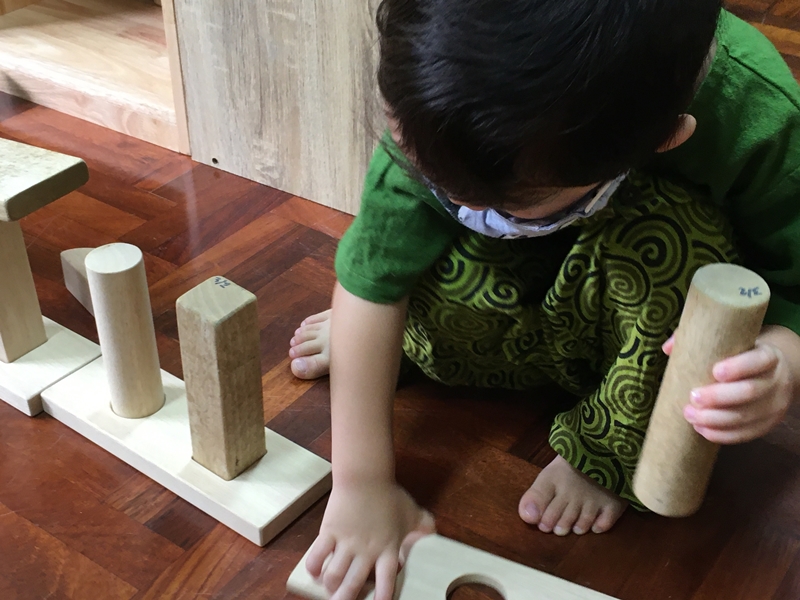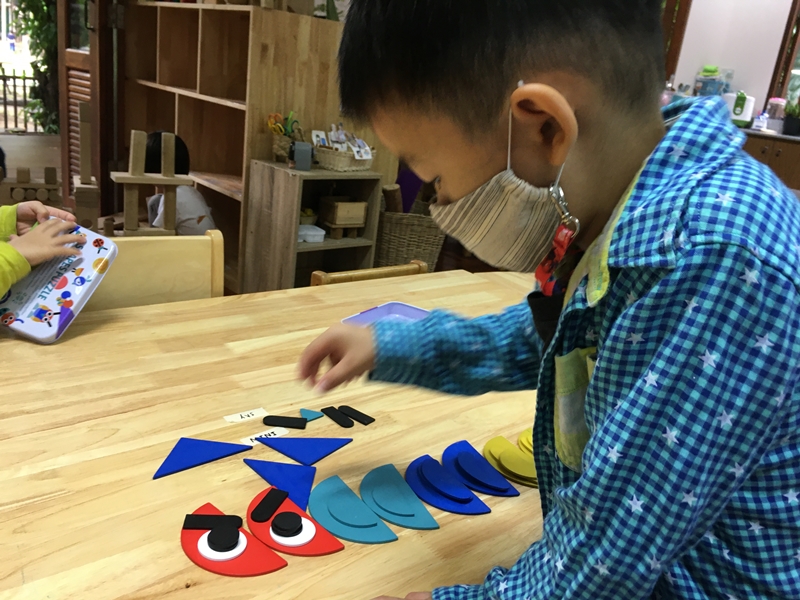
Learning by Living: The Importance of Free Play


Throughout play time, teachers observe carefully and become familiar with each child’s ways of approaching new tasks as they learn to negotiate their space and toys with other children. It is part of a sense of belonging and being in a community that develops in children. By noticing each child, they can recognize when a child needs a little extra support or give recognition to a child who has suddenly initiated a new kind of negotiation with a peer.
Students observe and collaborate as they are ready
Each week, the KG-1 students are a little more interactive than the week before. Solitary play at age 3, near to their friends yet still independent, is important for learning about their own stories, thoughts, imagination. As children get older, they play more directly with friends, creating stories and developing their thoughts and imaginations together. Both solitary and collaborative types of play are valued by teachers and students alike. Teachers notice when students shift their types of interaction as signs of change, and may consider why students are choosing one type over another.
 A young KG girl builds a tower today within a pretend courtyard, adding colorful beads inside, beads that she has played with all morning and found several different ways to use them.
A young KG girl builds a tower today within a pretend courtyard, adding colorful beads inside, beads that she has played with all morning and found several different ways to use them.

